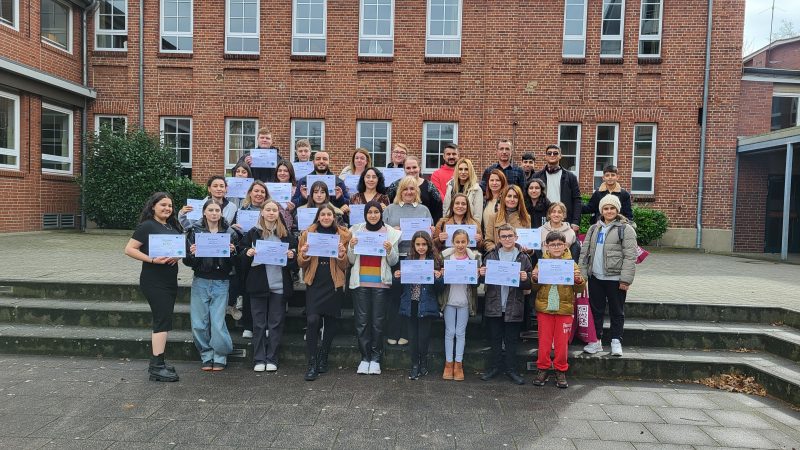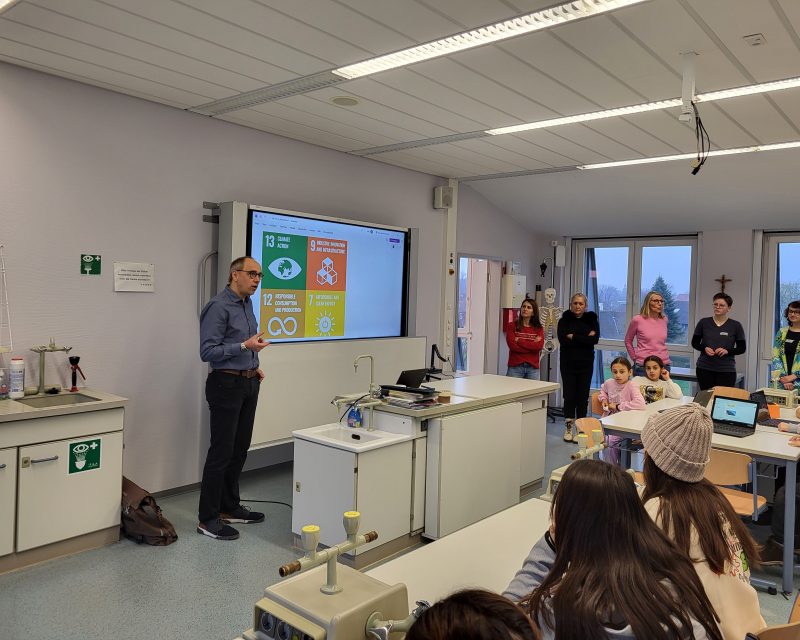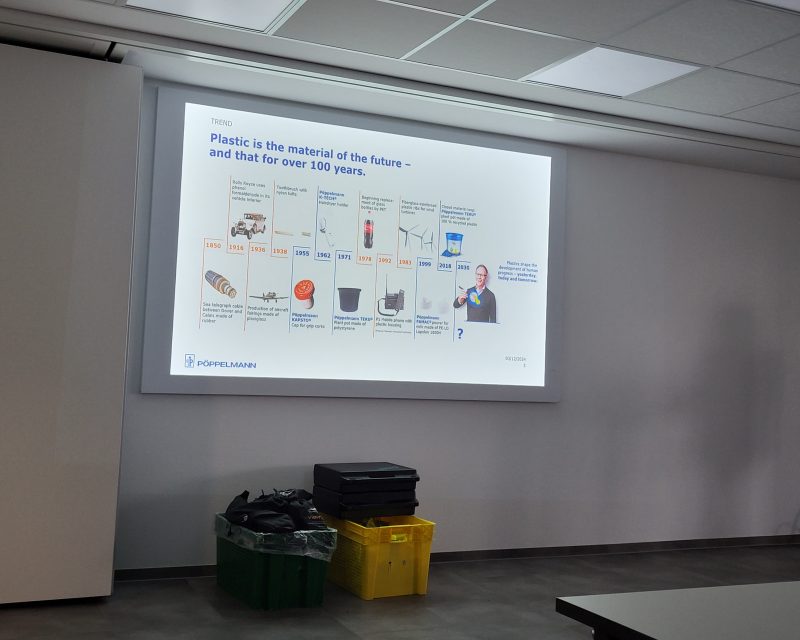The 2030 Agenda, adopted by all United Nations members, created 17 world Sustainable Development Goals (SDGs).


Station 1a – Air quality
Air Quality – Preparation
-
Hardware Connection:
Connect the single-board computer “micro:bit” with a USB line.
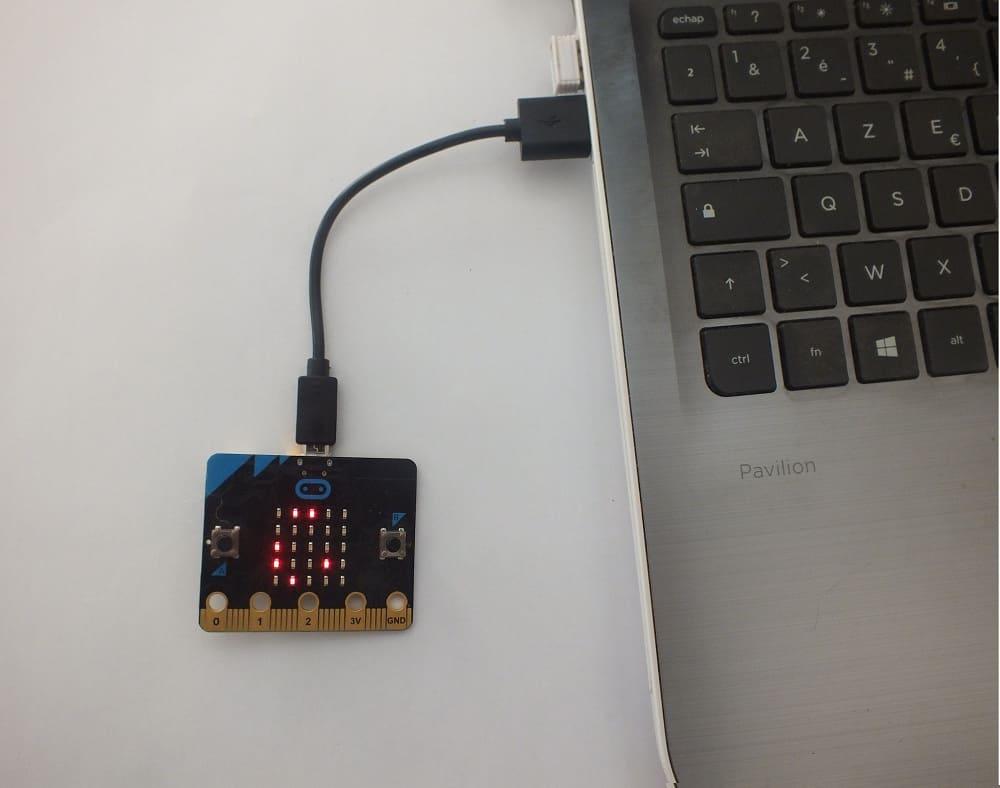
-
Setting up the software:
Start in a browser: https://makecode.microbit.org/

-
Start a new project:

Click the “Extensions” button.
Choose:

-
Program this by pulling the blocks together:
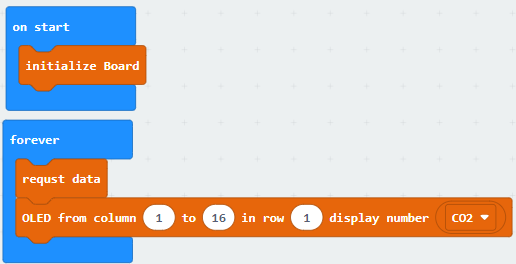
-
Connection to the “Environment Board”:
Insert the single-board calculator “micro:bit” into the “Environment Board”. Insert three AAA (micro) batteries. Turn on the “Environment Board” with the switch at the bottom right.

Station 1b – Air quality
Air quality

One of the goals of the United Nations is to take immediate action to combat climate change and its effects.
|

|
Through the media, we are often confronted with the fact that the CO2content in the atmosphere increases drastically. But how does this happen and why exactly is a rapidly increasingCO2content in the atmosphere so problematic? The experiments will help you to understand this better.
|
For the following experiments, note down observations and changes in the CO2 value.
-
Measurement of the CO2 content in the air.
Material:
Environment-Board

Performance:
-
Measurement of the CO2 content in exhaled air
Material:
Environment-Board
Performance:
-
Measurement of CO2 content in a container with plants
The vessel represents a biotope with plants and animals. First, make a guess
whether the CO2content in the biotope will differ from the CO2content in the room. Then measure
the value in the vessel.
Material:
Environment-Board, container with plants and animals (biotope)

Performance:
There is a connection between plants and living beings. Complements the scheme with arrows and terms, to illustrate this connection.

-
Measurement of the CO2 content in a container with a candle
Material:
Environment Board, Tealight, Glass Bowl, Wooden Handle
Performance:

Candle wax consists to a large extent of carbon, as well as crude oil or natural gas. What are the implications?
Have the burning of natural gas and crude oil affected the CO2 content of the air? Exchange ideas in the group and write down your result.
Station 2 – Magnetism

One of the goals of the United Nations is to build resilient infrastructure, promote inclusive and sustainable industrialization, and support innovation.
Electricity and magnetism play a major role in this. Think, for example, of power plants or WiFi. In order to get an impression of this, magnetic fields are to be detected here with the smartphone.
Same poles attract. Different poles repel each other.
If you hold two magnets together, you can observe that they repel each other when you hold the positive and positive terminals or the negative and negative terminals together.

If you hold the negative and positive terminals together, they attract each other.

Magnets have magnetic fields. So-called field lines run from one pole to the other.

Geek3 ( https://commons.wikimedia.org/wiki/File:VFPt_cylindrical_magnet_thumb.svg), „VFPt cylindrical magnet thumb“, https://creativecommons.org/licenses/by-sa/3.0/legalcode
The magnetic field creates the magnetic effect we are familiar with.

Berndt Meyer ( https://commons.wikimedia.org/wiki/File:Magnet0873.jpg), „Magnet0873“, https://creativecommons.org/licenses/by-sa/3.0/legalcode
Our earth also has a magnetic field that we can measure and see, for example with a compass. This aligns with the Earth’s magnetic field and we can navigate with it. The Earth’s magnetic field protects us from solar wind, a stream of charged particles, i.e. dirt and dust from the sun.

Zureks ( https://commons.wikimedia.org/wiki/File:Earth’s_magnetic_field,_schematic.png), „Earth’s magnetic field, schematic“, https://creativecommons.org/publicdomain/zero/1.0/legalcode
Magnetic fields are also formed when current flows through a conductor, because electric current consists of negative charge. This is called electromagnetism.
Tasks:
1. Think about where there is a magnetic field in everyday life or in your current environment.
2. Install the “phyphox” app on your smartphone. Measures the magnetic field at different locations and near different objects.
Open the app, go to “Magnetic Field” and then to “Amount”. There you can read the value for the strength of the magnetic field.

3. Proves the existence of electro smog. To do this, ask yourself the following questions: Where is the value particularly high? Where is it rather low?
What do magnetic fields actually have to do with the environment?

Electro smog
Electrical appliances are powered by electricity. In other words, they generate an electromagnetic field, such as Wi-Fi or Bluetooth.
Many electrical devices or other magnetic and electrical objects result in numerous electric and magnetic fields in one place.
This is called electro smog. Electro smog can be measured.
Tasks:
4. Think together about whether electro smog can have an impact on your health.
5. Can electro smog be harmful to nature?
6. Develop ideas on how to protect the environment in this regard.
Station 3 – Waste separation

One of the goals of the United Nations is to ensure sustainable consumption and production patterns.
More and more garbage is produced in the world. This leads to major problems.

Plastic waste is a major problem in the oceans, it washes up on many beaches.

The illegal disposal of garbage is also a problem and costs a lot of money.
Waste avoidance and recycling of waste are therefore important goals of environmental protection. In Germany, the yellow bin is used for empty packaging made of plastic, metal, etc. Such plastic packaging that belongs in the bin is, e.g., plastic cups, beverage cartons, etc. Packaging made of glass, paper and cardboard does not belong in the yellow bin, but is collected separately and recycled.
Waste separation with sieve, magnet and hair dryer
What happens to the contents of the yellow bin in the waste sorting plant?
1.Sieve
Various machines sort the waste. Each sorting machine works differently and uses a
particular separation process. It all starts with huge sieves. These are either drums which turn
or screen plates that swing back and forth. Anything small enough falls through the holes and separated from the rest.

2. Magnets
With magnets hanging over a conveyor belt, you sort out everything that is magnetic, for example
all tinplate cans. All the material passes under the magnet on a conveyor belt.
The cans fly up to the magnet and are then transported away by a second conveyor belt.

3. Air separators
Air separators work like large vacuum cleaners on which you can precisely adjust the suction power. You know this from your vacuum cleaner at home. On the weakest level, the vacuum is able to suck in small and light objects/materials like fluff but nothing heavy like rocks or iron screws. The air separator is adjusted in such a way that plastic films are still vacuumed, but plastic bottles or metal cans are not. For an experiment, you can also use a hair dryer instead of a vacuum cleaner.
Try out the separation methods for yourself
Task 1: Try to separate the “waste mixture”.
You have the following tools at your disposal:
Here’s what you could do. You can also move the small cardboard box or tap against it from below.

Do you get the different fabrics separated from each other?
What fabric properties do you use?
Task 2: You can use the app to check if you have understood the waste separation procedures. Or you can use the template and the cards on the table.
Link:
Waste separation in the sorting plant (learningapps.org)
Sources:
Vberger ( https://commons.wikimedia.org/wiki/File:Beach_in_Sharm_el-Naga03.jpg), “Beach in Sharm el-Naga03”, marked as public domain, details on Wikimedia Commons: https://commons.wikimedia.org/wiki/Template:PD-self
Dezidor ( https://commons.wikimedia.org/wiki/File:Hromada_odpadků.jpg), “Pile of Garbage”, https://creativecommons.org/licenses/by/3.0/legalcode
Sorting system Task 1 // Card table. What happens in the waste sorting plant? – PDF Free Download (docplayer.org)
Station 4 – Photovoltaic

One of the goals of the United Nations is to ensure access to affordable, reliable, sustainable and modern energy for all.
Use solar energy!

What is photovoltaics?
Photovoltaics is the conversion of light energy, mainly sunlight, into electrical energy.
In this experiment, we will investigate how light energy can be used to make an LED lamp glow.
Experiment: Photovoltaic
Material:
Performance:
1. Place the cardboard house on a stable surface.
2. Turn on the mobile phone flashlight and point it directly at the solar cell.

What can you observe with the LED lamp?
Tasks:
1. Think about where photovoltaic systems can be used in everyday life.
2. Discuss why the use of photovoltaic systems is important for the environment.
Sources:
Pujanak ( https://commons.wikimedia.org/wiki/File:Solar_panels_on_a_roof.jpg), “Solar panels on a roof”, marked as public domain, details on Wikimedia Commons: https://commons.wikimedia.org/wiki/Template:PD-self

